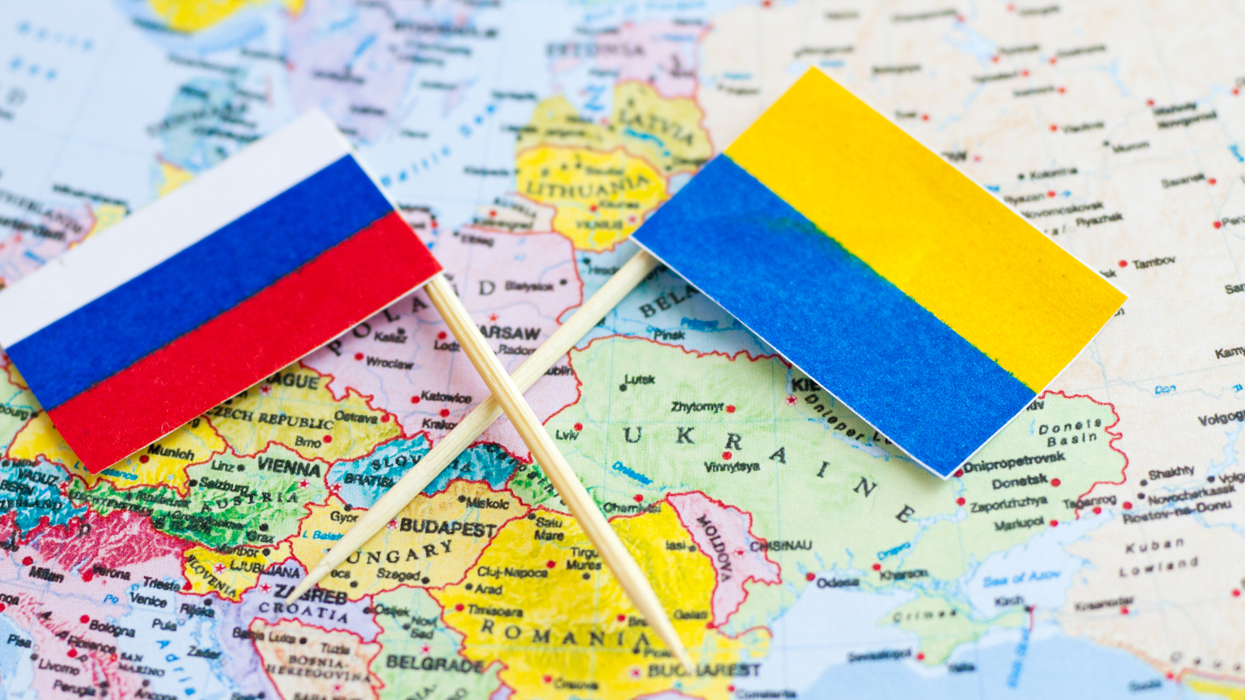The Fulcrum strives to approach news stories with an open mind and skepticism, striving to present our readers with a broad spectrum of viewpoints through diligent research and critical thinking. As best we can, remove personal bias from our reporting and seek a variety of perspectives in both our news gathering and selection of opinion pieces. However, before our readers can analyze varying viewpoints, they must have the facts.
What is the status of the March 11, 2025 Ukraine-Russia ceasefire proposal?
As of March 11, 2025, Ukraine has officially accepted a U.S.-proposed, immediate 30-day ceasefire in its conflict with Russia, contingent upon Russia's reciprocal agreement. The United States has lifted previous restrictions on military aid and intelligence sharing with Ukraine that were imposed eight days ago.
This agreement, reached during talks in Saudi Arabia, is contingent on Russia's acceptance and includes provisions for halting hostilities and initiating negotiations for a lasting resolution.
Russian officials have not yet provided an official response to the ceasefire proposal. Some Russian officials and commentators have expressed skepticism, suggesting that the ceasefire could be a tactic for Ukraine to regroup and rearm.
The international community awaits Russia's response to the ceasefire proposal, which is seen as a critical step toward ending the ongoing conflict and establishing lasting peace in the region.
What details are available about specific provisions that may be part of the potential agreement?
The proposed Ukraine-Russia ceasefire includes several specific provisions designed to halt the ongoing conflict and pave the way for future negotiations. The key provisions, as currently outlined, are:
Military Measures
- Immediate Halt to Fighting:
Complete cessation of military operations, including artillery, missile, drone, and naval attacks across the entire frontline. - Withdrawal of Heavy Weapons:
Mutual agreement to move heavy weapons away from frontline areas, establishing buffer zones to reduce accidental or deliberate provocations.
Humanitarian Measures
- Prisoner Exchange:
Exchange and release of prisoners of war and civilians detained during the conflict. - Return of Displaced Civilians:
Facilitate the return of Ukrainian civilians forcibly relocated or displaced by the conflict, including thousands of Ukrainian children moved into Russian-held territory.
Diplomatic and Monitoring Measures
- International Observers:
Deployment of neutral international observers to ensure compliance with ceasefire terms and promptly investigate any violations. - Renewed Peace Negotiations:
Immediate steps to resume comprehensive peace talks to address broader territorial, security, and diplomatic issues.
Economic Cooperation
- Resource Management Discussions: Possible discussions on collaborative economic arrangements, including mineral rights, aimed at reducing economic tension and stabilizing both countries' economies.
Has there been a pause in hostilities while the ceasefire is being negotiated?
Despite Ukraine's acceptance of a U.S.-proposed 30-day ceasefire, hostilities have continued. Russian forces launched air attacks on Ukrainian cities, including Kyiv and Kharkiv, shortly after the announcement. Russian President Vladimir Putin has not agreed to the ceasefire and has continued missile and drone attacks on Ukrainian cities. The international community awaits Russia's official response to the ceasefire proposal, with further diplomatic engagements planned to involve significant global stakeholders.What details are available about Russia returning territories it currently occupies in Ukraine?
As of March 11, 2025, the proposed 30-day ceasefire between Ukraine and Russia does not include provisions for Russia to return territories it currently occupies in Ukraine. Discussions about territorial control remain a significant point of contention in the peace negotiations.
Ukraine's Position:
Ukrainian President Volodymyr Zelenskyy has consistently maintained that any peace agreement must involve the restoration of Ukraine's territorial integrity, including the return of all occupied regions. In November 2022, Zelenskyy proposed a 10-point peace plan emphasizing the withdrawal of Russian forces from all occupied territories and the restoration of Ukraine's pre-2014 borders.
Russia's Position:
Russian President Vladimir Putin has firmly opposed relinquishing control over the occupied territories. In June 2024, Putin outlined Russia's terms for a ceasefire, demanding Ukraine recognize Russian sovereignty over the annexed regions of Donetsk, Luhansk, Kherson, and Zaporizhzhia, including areas not fully controlled by Russian forces at that time. He also insisted that Ukraine abandon its aspirations to join NATO and adopt a neutral status.
International Perspectives:
U.S. Secretary of State Marco Rubio has suggested that Ukraine may need to make territorial concessions to achieve peace, acknowledging the improbability of Ukraine reclaiming all lost territories swiftly. This stance reflects a more stringent approach by the current U.S. administration compared to previous policies.
The ceasefire proposal focuses on halting active hostilities and initiating humanitarian measures, such as prisoner exchanges and the return of displaced civilians. However, the issue of territorial sovereignty remains unresolved, with both Ukraine and Russia holding firm to their respective positions. The international community continues to monitor the situation, advocating for negotiations that respect Ukraine's sovereignty while seeking a sustainable peace solution.
Kristina Becvar is co-publisher of The Fulcrum and Executive Director of the Bridge Alliance Education Fund.




















